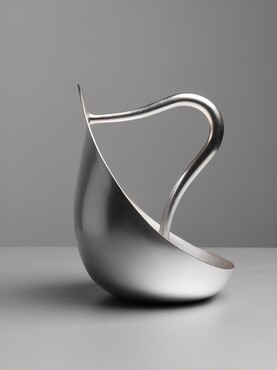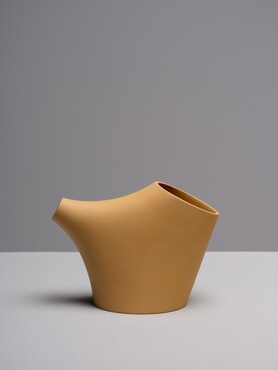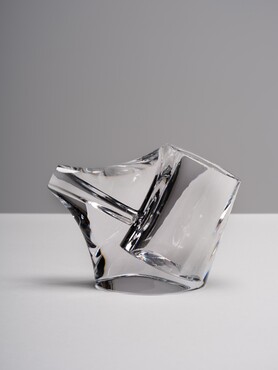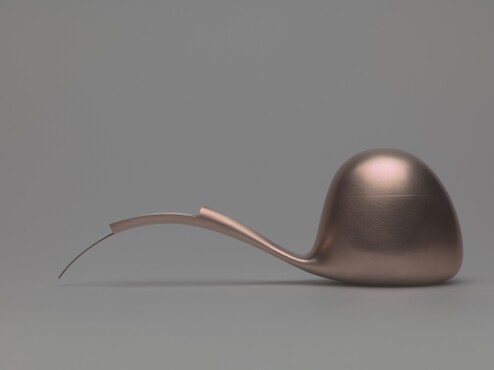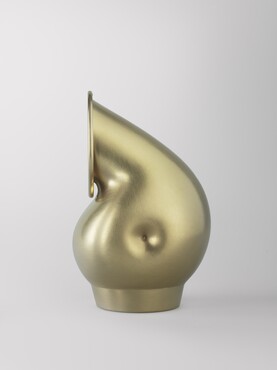Ontdek de collectie
Kunstmuseum Den Haag has a treasure chamber of over 160.000 pieces of art. Here we work on making the highlights from this collection available online.
Aldo Bakker
Pouring Vessels
Kunstmuseum Den Haag presents the first survey of all schenkers (‘pouring vessels’) created by Dutch designer Aldo Bakker (b. 1971). It was Bakker himself who coined the term ‘schenker’, from the Dutch verb ‘schenken’, an ambiguous word meaning to gift or to pour. At the same time, pouring is also giving. This double symbolic meaning is important, as there is more to Bakker’s schenkers than simply a carafe from which to serve water or wine.
Aldo is essentially driven by curiosity and the urge to discover, understand and execute a form. To him, this constitutes a process of temporary appropriation. Next come considerations like material, technique, weight, colour, sound and finish. Once all these facets come together and reinforce one another, what emerges is a congruous new form with its own unique character. This requires extremely careful execution, so Aldo works only with the best craftsmen and production partners.
By not initially proceeding from a particular discipline or context of use, Aldo creates for himself the space he needs to produce forms unrelated to any antecedent or archetype. This result in forms freed from everything that surrounds them; autonomous objects barely linked to any time, place or culture.
The contradiction between these autonomous, sometimes almost unattainable forms and the potential actions of the user is what makes Aldo’s schenkers so exhilarating. Available to pick up and use, the schenkers invite intimacy. In fact, they take the lead, stimulating the senses. The flow of soy sauce from Soy Pourer is for example accentuated in an almost mannerist way, while the drops of moisture that remain on the voluptuous curves of Tongue have an almost sensual effect. Each schenker is a centrepiece in itself, forcing the observer to perceive things differently.
The exhibition will feature around 40 schenkers.
A folded accordion booklet of the same name will be published to coincide with the exhibition. Featuring an essay by Ernst van Alphen, it will be available at the museum shop.

